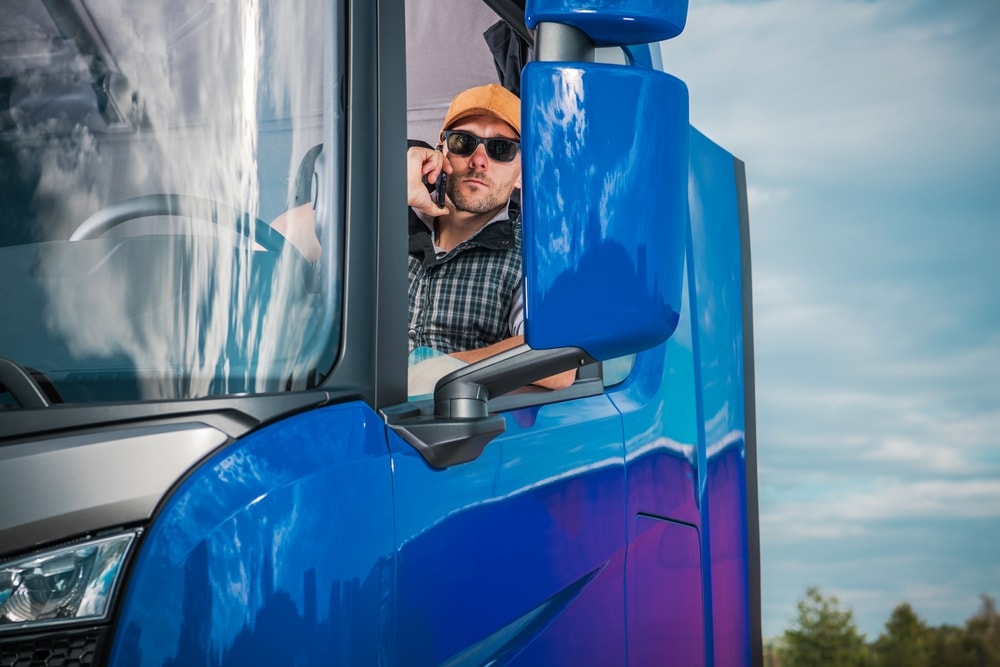Introduction
In trucking, ELDs have completely changed how drivers and companies track and manage road time. In place of the paper logbooks that the drivers used to jot down, the devices automatically log driving time and rest stops. It is now easier to deal more effectively with federal hours-of-service (HOS) regulations with the use of ELDs. They have become quite instrumental for drivers and companies in terms of convenience for their operations and clarity in daily schedules.
But ELDs are much more than just about checking a compliance box; they’re about people and about safety. Assuring that drivers do not spend too much time behind the wheel, these devices help to reduce fatigue and the risks associated with it. To trucking companies, ELDs lessen the burden of the regulatory process while building a safer environment for their commercial vehicle drivers and others who share the same road. This has become a powerful way of balancing efficiency with well-being so that the trucking industry can be safer and smarter.

The Origins of ELDs: Why They Were Implemented
The journey to Electronic Logging Devices began with the simplest of ideas: to make trucking safer for all on the road. For years, drivers kept paper logs of their HOS, but those logs simply were not perfect. They were easy to miscalculate or even manipulate, which caused some drivers to push past their limits. Fatigue-caused crashes became a growing concern and urged the Federal Motor Carrier Safety Administration (FMCSA) to intervene. The ELD mandate by FMCSA aimed at a more accurate and reliable way of ensuring that drivers follow the HOS rules in place for reducing risks and saving lives.
Moving away from paper logs to electronic logging is a huge change but brings tons of benefits to the industry. Unlike paper logbooks, ELDs connect directly to a truck’s engine, automatically tracking driving hours in a virtually impossible-to-falsify manner. To drivers and motor carriers, this meant less paperwork and more time to do the job. In addition, consistent real-time data helped everyone stay on the same page with federal regulations. While it wasn’t easy to adjust to at first, ELDs have helped transition the industry toward better compliance and safer roads for all.

What Are ELDs and How Do They Work?
Electronic Logging Devices, or ELDs, are devices designed to make tracking driving hours and driver’s duty status easier. These devices connect directly to a vehicle’s engine to automatically record important data like driving time, engine hours, and location. ELDs replace traditional paper logbooks with an automated method of tracking driver compliance with federal hours-of-service rules to ensure drivers are not driving for too long without rest. Their purpose is not just about compliance; it goes to create a much safer and more transparent trucking industry for all on the road.
An ELD has a few key components that work together to get the job done. There’s the hardware that plugs into the vehicle, software that follows strict specifications to process the data, and professional installation to make sure it’s all set up correctly. Once in place, the device records information such as when the engine is running, how far the truck has traveled, and how long the driver has been on duty. It displays this information in a form that is simple for drivers and fleet managers to understand; this limits the chances of errors and keeps everything current. The ELD is a reliable and simple method of recording hours accurately and maintaining duty status records with features such as GPS tracking and tamper-proof logs
The Impact of the ELD Mandate on the Trucking Industry
Before ELDs, drivers used paper logbooks, which made it easy for mistakes to slip through. Drivers ended up pushing themselves too hard without realizing it, leading to fatigue. Back then, accidents weren’t even being tracked the way they are today. So, the ELD modified the scene by precise monitoring of hours spent driving in strict accordance with federal guidelines. This has helped reduce fatigue-related crashes and made the roads safer for drivers, fleets, and everyday commuters alike. Fleet managers also gained tools to step in before issues arose, creating a safer, more accountable industry.
One of the biggest benefits of ELDs is how they make regulatory compliance easier. For years, keeping track of Hours of Service rules was a time-consuming, manual process that left room for mistakes. ELDs handle so much of that automatically today: from recording hours of driving to location data, even details of driver vehicle inspection reports. This saves not only a lot of time but also keeps drivers and carriers from receiving costly violations. By removing much of the guesswork when it comes to compliance, ELD devices have allowed drivers to spend more time on the road and less on paperwork, ultimately streamlining the workflow for all parties involved.
Of course, it wasn’t all smooth sailing for the transition to ELDs. To many especially those who have spent years using paper the change felt like losing control of a familiar process. Smaller fleets struggled with the upfront costs of the devices themselves and the effort required to train their teams on this new technology. But as the industry adapted, these early irritants gave way to a broader appreciation for the long-term advantages. Today, ELD compliance isn’t just about meeting federal standards; it’s about safer, more efficient, and even smarter trucking that works for commercial drivers and fleets alike.

Benefits of ELDs for Stakeholders
Electronic Logging Devices have greatly simplified life on the road for drivers by automating hours-of-service tracking. Instead of using manual logbooks, drivers will correctly record driving hours to retain service regulations with minimal errors. This automation helps drivers avoid potential fines and supports fair hos monitoring, thus fostering a safer work environment. Besides, electronic logs save convenience; they reduce administrative tasks for drivers, allowing them to spend more productive time on the road and less paperwork.
To fleet managers, ELD data presents a goldmine of real-time insight into the operation of the fleet, enabling close monitoring of driver hours, route optimization, and fuel efficiency. This data-driven approach reduces unnecessary fuel consumption and operational costs while enhancing overall efficiency. ELDs will also greatly help motor carriers, as they assure them of regulatory compliance and reduce liability with accurate recordkeeping. Furthermore, ELDs support operational improvements that enable carriers to identify inefficiency points and ways to perform better. For that, the move to adopt ELDs becomes very beneficial for all concerned
Challenges and Considerations
The shift to Electronic Logging Devices has not been without of its share of headaches for the trucking world. The regulations are not across the board; they depend on the type of vehicle, model year, and whether hazardous materials are being transported. For example, most commercial motor vehicles need to comply. Still, older trucks and specialized operations may be exempt, leaving a fleet to work with various types of equipment while navigating complex rules. These variations in requirements mean carriers need clarity on exactly what is needed with ELD to keep their operations smooth and compliant.
There’s no question that smaller carriers and independent drivers often bear a greater burden from this shift than larger companies do. Considering all the factors, such as limited budgets, unfamiliar technologies, and sometimes just fear of change, it turns the path to adopting ELDs out to be pretty tough to navigate. For this reason, finding a perfect ELD solution for unique business needs has become so important. Whether managing older trucks or transporting hazardous materials, choosing the right device can make all the difference. A good match not only helps with compliance but also smoothes out operations and builds confidence in an industry that’s always on the move.

How ELDs Have Changed the Future of Trucking
Electronic Logging Devices, or ELDs, have revolutionized trucking to make life easier and much safer for all concerned. These devices help drivers stay within the driving limits mandated by federal law, preventing driver fatigue and reducing the likelihood of accidents, by automating the tracking of driving activity. ELDs simplify compliance by substituting paper logs with accurate, real-time data, taking the stress out of meeting regulations. This technology doesn’t just help truck drivers-it streamlines operations for trucking companies, giving them a clearer picture of fleet activity and helping them make smarter decisions.
But ELDs are not a solution unto themselves; they are part of a larger, evolving world of logistics technology. They work together with other tools to help trucking companies optimize their operations. ELDs collect real-time data on everything from driving limits to fuel usage, making it easier to identify problems and improve performance. As this technology continues to evolve, the reality is that ELDs are not just about compliance; they are building toward the future of trucking-safer, smarter, and better equipped to meet any challenges down the road.

Key Takeaways and Looking Ahead
Electronic Logging Devices have brought an ocean of change in the way the trucking industry works, making life on wheels much safer and more effective. ELDs reduce the burden on drivers in maintaining records of their hours, making it easier to be compliant with the regulations regarding Hours of Service. As a result, it keeps drivers safer by preventing driver fatigue. They make fleet management less of a headache, capturing important data that helps iron out operational wrinkles and keeps the wheels turning. ELDs aren’t about compliance; they’re about making life easier and safer for everyone on the highway.
At ShipEX, we understand how ELD compliance can be overwhelming at times and that you don’t have to go through it alone. We are here to help drivers and motor carriers in their efforts to conquer the challenges of ELD regulations with tools and strategies designed to make things easier. Whether it’s tracking easier, staying on top of HOS rules, or knowing your fleet is FMCSA-compliant-we’ve got you covered. Call us today to work together towards your smooth journey through ELD implementation with ShipEX.
